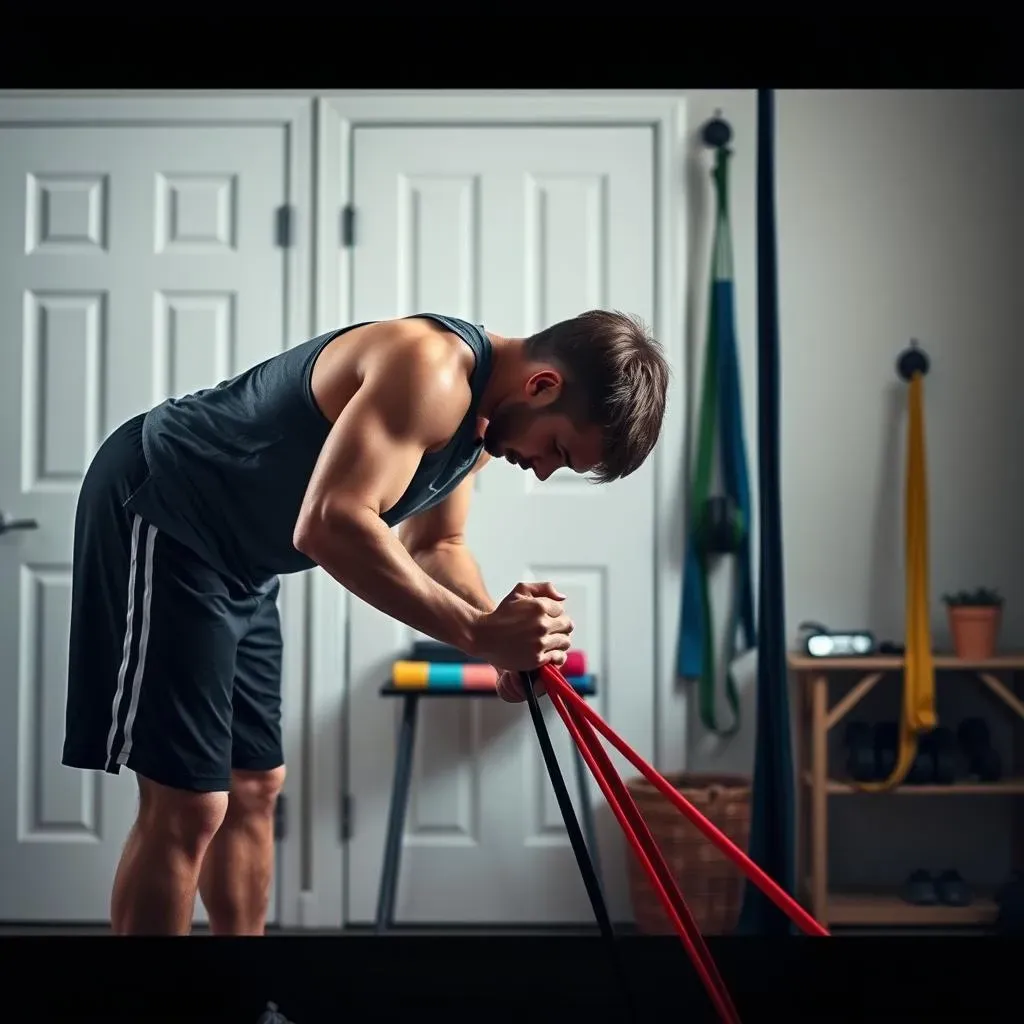Table of Contents
Let's face it, working from home can be a pain in the...well, back. All those hours hunched over a laptop? It's not doing your posture any favors. That rounded, compressed spine isn't just uncomfortable; it can lead to actual pain and make you feel like a crumpled-up pretzel. But don't worry, I've got your back—literally! This article is all about using resistance bands for back workouts at home. We're not talking about complicated gym equipment; just simple bands that can make a huge difference. We'll explore why your back gets cranky, how resistance bands can be your secret weapon, and some killer exercises to get you feeling strong and upright. So, if you're ready to say goodbye to backaches and hello to a healthier, more confident you, let’s get started with these back workouts at home with resistance bands. Prepare to discover easy ways to build a stronger back without needing a gym.
Why Your Back Needs Some Love (Especially Working From Home)

Why Your Back Needs Some Love (Especially Working From Home)
Okay, let’s be real, our backs are taking a beating these days, especially if you're part of the work-from-home crew. Think about it: you're probably spending hours hunched over your laptop, maybe on a couch or at a kitchen table that wasn't designed for ergonomic perfection. This leads to a whole bunch of problems. We're talking rounded shoulders, a compressed spine, and a neck that's jutting forward like a turtle trying to see a carrot. All that bad posture? It weakens the muscles that are supposed to support you, like the ones in your back and core. And guess what happens when those muscles get weak? You get back pain, shoulder pain, and just an all-around feeling of being stiff and uncomfortable. It's like your body's screaming for a change, and that change starts with understanding how important a strong back really is.
Resistance Band Exercises: Your New Best Friend

Resistance Band Exercises: Your New Best Friend
Okay, so now we know our backs need some serious attention. But who has time for a fancy gym membership? That's where resistance bands come in – they're seriously the unsung heroes of home workouts. Think of them as your personal portable gym. They're cheap, super versatile, and you can take them anywhere. Plus, they're not intimidating like some big clunky weight machine. Resistance bands use your own strength against the band's resistance, and it is perfect for building muscle and improving posture. They're like a gentle but firm nudge for your muscles, guiding you through the movements and helping you to feel how your muscles should be working. It's like having a personal trainer, but one that fits in your drawer.
Now, you might be thinking, "Okay, bands are cool, but do they actually work?" The short answer is: absolutely! They're not just for light stretching, they can provide a real challenge. When you pull a resistance band, it's like pulling against a constant force, which activates your muscles in a different way than weights. This is great for building strength in your back, especially those muscles that are often neglected. We're talking about the lats (those big muscles down the sides of your back), the traps (the ones between your shoulders and neck), and the rhomboids (those muscles that help pull your shoulder blades together). Strengthening these muscles will not only make you feel stronger, but it'll also help to counteract the effects of bad posture and make you stand up taller and prouder. It's like giving your back a superhero upgrade, one band at a time.
Here is a simple table to help you understand what muscles are worked when performing some resistance band exercises.
Exercise | Target Muscle Group |
|---|---|
Bent-Over Rows | Lats, Rhomboids |
Reverse Flyes | Rhomboids, Traps |
Lat Pulldowns | Lats, Biceps |
Putting It All Together: Your Back Workout Plan

Putting It All Together: Your Back Workout Plan
Time to Get Moving
Alright, enough talk, let's get to the good stuff – the actual workout. Now, I'm not gonna throw a bunch of complicated moves at you. The key here is to start simple and focus on getting the movement right. It’s better to do a few exercises well than a bunch of them poorly. We're aiming for that mind-muscle connection, where you really feel the muscles working. You should be focusing on the muscles in your back, not just going through the motions. Aim for about 3 exercises, doing each for 3 sets of 10-12 repetitions. If you're new to this, you can start with fewer reps and sets and gradually increase them as you get stronger. Remember, consistency is more important than intensity at first. Try to do this workout twice a week to see results in about 1-2 months. It's not a race; it's a journey to a stronger, healthier back.
And don't forget that good posture isn’t just for workouts. You gotta think about it throughout the day. Do a posture check every now and then. Are your shoulders slumped? Is your chin jutting out? Take a moment to adjust yourself. It's like a mini-workout for your posture muscles, and it'll make a huge difference. You can even set reminders on your phone to check yourself. Every time you see that notification, straighten up and feel those back muscles wake up. It's the little things that add up to big changes.
Band Up Your Routine
Let's talk about some specific exercises you can do with your resistance bands. First, we have the bent-over row. Stand with your feet shoulder-width apart, hold the band in both hands, and bend slightly at your waist, keeping your back straight. Then, pull the band towards your chest, squeezing your shoulder blades together. This is a great one for targeting your lats and rhomboids. Next up is the reverse fly. You can stand or sit for this one. Hold the band in front of you, arms extended, and then pull the band apart, again squeezing your shoulder blades together. This hits your traps and rhomboids. And don't forget the lat pulldown. You can loop the band over a door or something sturdy, grab the ends, and pull down. This is great for your lats and biceps. But the fun doesn't stop there! You can also use superbands for things like deadlifts or mini-bands for superman exercises. They're like a choose-your-own-adventure for your back workout.
Now, I know what you might be thinking: "But what about pull-ups?" I hear you! Pull-ups are fantastic for back strength, but they can be tough. You can use resistance bands to assist you with pull-ups. Just loop the band around the bar and put your foot or knee in the loop. This takes some of the weight off and allows you to work on your pull-up form and build strength. It's like having training wheels for your pull-ups, which is a great way to build up your strength and maintain good form. Remember, slow and steady wins the race.
Here is some insight from a fitness expert.
